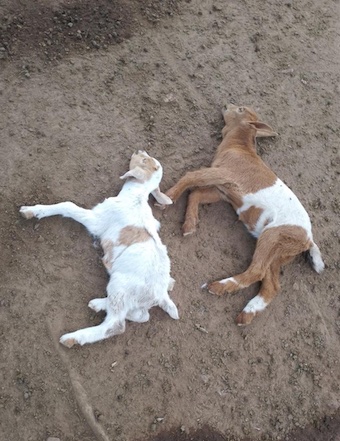
 A confirmed outbreak of goat plague, scientifically known as Peste des Petits Ruminants (PPR), has wiped out hundreds of goats in Kikuube district, western Uganda.
A confirmed outbreak of goat plague, scientifically known as Peste des Petits Ruminants (PPR), has wiped out hundreds of goats in Kikuube district, western Uganda.
The highly contagious viral disease is characterised by sudden fever, depression, eye and nasal discharge, mouth lesions, laboured breathing, coughing, foul-smelling diarrhoea and rapid death.
It spreads easily through direct contact, airborne droplets, and contaminated feed or water. Although goats and sheep are the primary hosts, the virus can also infect camels, pigs and, to a limited extent, cattle.
Over the past week, farmers reported losing more than 400 goats, with the hardest-hit areas being Buhuka, Butoole and Kyangwali parishes in Kyangwali sub-county. The deaths began early last month, forcing farmers to bury carcasses as panic grew over the safety of consuming infected meat.
Dr Barnabas Ntume, the Kikuube district veterinary officer, confirmed that blood samples from sick animals tested positive for PPR at the National Animal Disease Diagnosis and Epidemiology Centre (NADDEC).
He said the district has now rolled out an emergency mass vaccination programme to contain the spread. Ntume also warned farmers against moving goats and sheep from affected parishes to other sub-counties or neighbouring districts, citing a high risk of cross-border spread.
At Buhuka landing site, farmer Vincent Okumu said he had already lost 40 goats and fears more may die. Kyangwali sub-county LC III chairperson Emmanuel Bisemeza appealed to the district veterinary department to accelerate the vaccination drive before more herds are wiped out.
This outbreak mirrors previous incidents in the region. In July 2025, a mysterious disease killed more than 300 goats in Buseruka sub-county, Hoima district, with symptoms similar to those now seen in Kikuube.
Earlier outbreaks were recorded in March 2021, when over 200 goats died at Mbegu landing site, and again in November 2021, when more than 300 goats succumbed before mass vaccination brought the situation under control.



